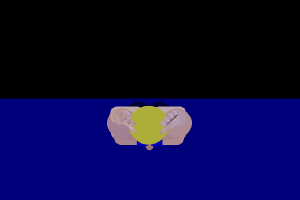Breaststroke
Breaststroke is a swimming stroke that is swum on the chest, with the torso stationary and minimal rotation. It is one of the four swimming strokes used in competitive swimming, alongside the freestyle, backstroke, and butterfly stroke. The breaststroke is distinguished by its unique arm and leg movements, which occur in a simultaneous, symmetrical manner. This stroke is known for its technical precision and the timing required to perform it efficiently.
History[edit | edit source]
The origins of the breaststroke can be traced back to the Stone Age, making it the oldest of the competitive swimming strokes. Early depictions and descriptions suggest that human beings used a form of breaststroke to swim across rivers and lakes. The stroke has evolved significantly over the centuries, with major changes in technique occurring during the 20th century, which led to faster swimming times and new competitive standards.
Technique[edit | edit source]
The breaststroke consists of three main parts: the pull, the kick, and the glide. Each phase must be executed in harmony to maintain speed and efficiency in the water.
Pull[edit | edit source]
The pull phase begins with the swimmer's arms extended straight forward. The hands then sweep outwards and slightly downwards in a circular motion, ending with the hands pushing back towards the hips. This motion helps to propel the swimmer forward.
Kick[edit | edit source]
The kick, often referred to as the "frog kick," involves the swimmer's legs bending at the knees and then extending outward and backward. This movement provides additional propulsion and helps to maintain the swimmer's balance in the water.
Glide[edit | edit source]
After the pull and kick, the swimmer extends their arms forward and brings their legs together, assuming a streamlined position. This glide phase is crucial for maintaining momentum and preparing for the next stroke cycle.
Rules[edit | edit source]
In competitive swimming, breaststroke has specific rules that govern how the stroke must be performed. Swimmers must keep their body on their breast throughout the race; alternating movements of the arms and legs are required, and the hands must be pushed forward together from the breast on, under, or over the water. Turns and finishes require both hands to touch the wall simultaneously in the same horizontal plane.
Training and Technique Improvement[edit | edit source]
Improving breaststroke technique involves focused training on each part of the stroke, particularly the coordination of the pull, kick, and glide. Swimmers often use drills to isolate and improve specific aspects of their stroke, such as kick efficiency or arm movement precision.
In Competitive Swimming[edit | edit source]
Breaststroke is one of the strokes swum in medley events, both individually and in relays. It is the second stroke swum in the individual medley and the first in the medley relay. Due to its technical nature, mastering the breaststroke can be challenging but is essential for competitive swimmers who participate in medley events.
Search WikiMD
Ad.Tired of being Overweight? Try W8MD's physician weight loss program.
Semaglutide (Ozempic / Wegovy and Tirzepatide (Mounjaro / Zepbound) available.
Advertise on WikiMD
|
WikiMD's Wellness Encyclopedia |
| Let Food Be Thy Medicine Medicine Thy Food - Hippocrates |
Translate this page: - East Asian
中文,
日本,
한국어,
South Asian
हिन्दी,
தமிழ்,
తెలుగు,
Urdu,
ಕನ್ನಡ,
Southeast Asian
Indonesian,
Vietnamese,
Thai,
မြန်မာဘာသာ,
বাংলা
European
español,
Deutsch,
français,
Greek,
português do Brasil,
polski,
română,
русский,
Nederlands,
norsk,
svenska,
suomi,
Italian
Middle Eastern & African
عربى,
Turkish,
Persian,
Hebrew,
Afrikaans,
isiZulu,
Kiswahili,
Other
Bulgarian,
Hungarian,
Czech,
Swedish,
മലയാളം,
मराठी,
ਪੰਜਾਬੀ,
ગુજરાતી,
Portuguese,
Ukrainian
Medical Disclaimer: WikiMD is not a substitute for professional medical advice. The information on WikiMD is provided as an information resource only, may be incorrect, outdated or misleading, and is not to be used or relied on for any diagnostic or treatment purposes. Please consult your health care provider before making any healthcare decisions or for guidance about a specific medical condition. WikiMD expressly disclaims responsibility, and shall have no liability, for any damages, loss, injury, or liability whatsoever suffered as a result of your reliance on the information contained in this site. By visiting this site you agree to the foregoing terms and conditions, which may from time to time be changed or supplemented by WikiMD. If you do not agree to the foregoing terms and conditions, you should not enter or use this site. See full disclaimer.
Credits:Most images are courtesy of Wikimedia commons, and templates, categories Wikipedia, licensed under CC BY SA or similar.
Contributors: Prab R. Tumpati, MD





